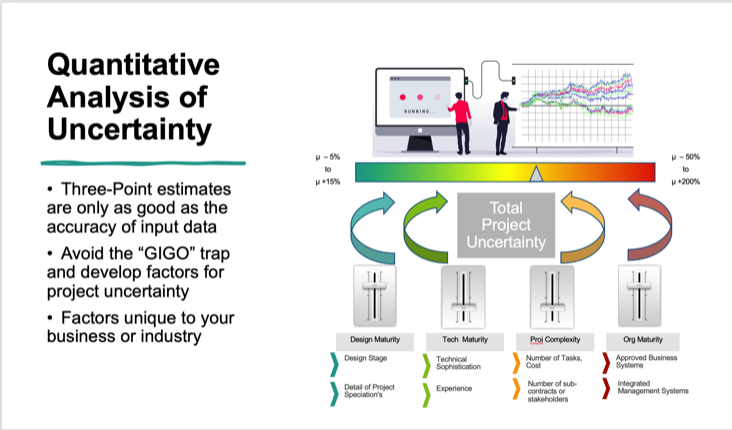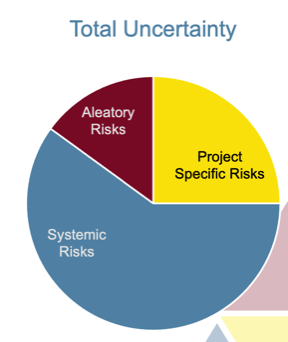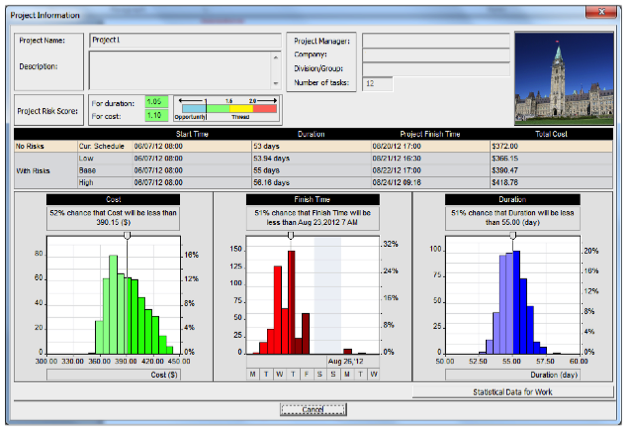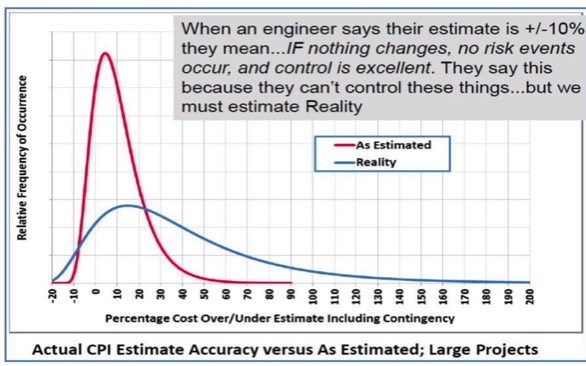Managing Uncertainty and Risk

Proposals are certainly a high risk environment as predictions concerning future costs and schedule stet the stakes for future success. Before you submit your proposal you need to do a thorough review of project cost and schedule and identify the likelihood of achieving success (on time within budget).
It's more than pretty multi-colored cubes or matrices and unquantifiable assessments. There needs to be a high degree of rigor behind the analysis and the results quantifiably determined.
Most uncertainty lurks beneath the surface in terms of your management systems, processes, the technology selected, etc. These factors are as important - if not more so than frequently cited risks like a labor disruption.
Simulative approaches like Monte Carlo are only as effective as the input data. Garbage in = Garbage out. Unless the model is based on sound and verifiable assumptions it is of little value.
Is it a Risk or an Uncertainty
Uncertainty. Those things we do not know. These are sometimes called "Epistemic Risks" because we can usually mitigate these by learning more about something. One of the hidden elements of Epistemic risk is the systemic component of risk .. that is what we as an organization contribute due to our organizational structure, our management procedures, etc. The second component is Aleatory Risk … the fact that every time we do something the time it takes us to do it or the outcome is slightly different. This is an inherent randomness. Both these factors are commonly addressed by a factor +/- some percentage of the estimate. But what is an appropriate factor to use? This is an area where I specialize

Risks. These are the "if x - then y" risks we tend to focus on when we do risk analysis. These risks are usually cataloged in a risk register, subjected to qualitative analysis, and displayed on the infamous multi-colored cube "heat map". While that may be something the folks in the C Suite understand it really isn't the end of the story - not by a long ways.
The difficult part is assessing these risks in context of the proposal/project and then making schedule and price adjustments to account for the effects. Statistics based simulations can quantify these effects IF done properly. The Contract Coach is a collaborating partner with two of the best companies making tools for this purpose: ProPricer and Risky Project.
Our training and experience with their tools enable us to perform meaningful analyses of the cost and schedule data and perform a detailed risk review that is supported by credible data and methodology.
Quantitative Cost and Schedule Risk Analysis

While many "Risk Management" experts do a simple qualitative analysis and present management with a multi-colored risk "heat map" as their work product - the Contract Coach recommends a more intensive and nuanced approach.
While we too will identify risks, record them in a risk register, and document various risk characteristics e.g., polarity (risk or opportunity), likelihood, and impacts - we also use that data for analytical purposes.
By using various tools such as Intaver's Risky Project and the resource loaded project schedule we can assign risks to various activities or phases of the project and then calculate the odds of achieving on-time on-budget performance. The figure shown here is typical of the analytical products the software can produce and includes risk adjusted estimates of project cost, duration, and completion date.
By using various tools such as Intaver's Risky Project and the resource loaded project schedule we can assign risks to various activities or phases of the project and then calculate the odds of achieving on-time on-budget performance. The figure shown here is typical of the analytical products the software can produce and includes risk adjusted estimates of project cost, duration, and completion date.
